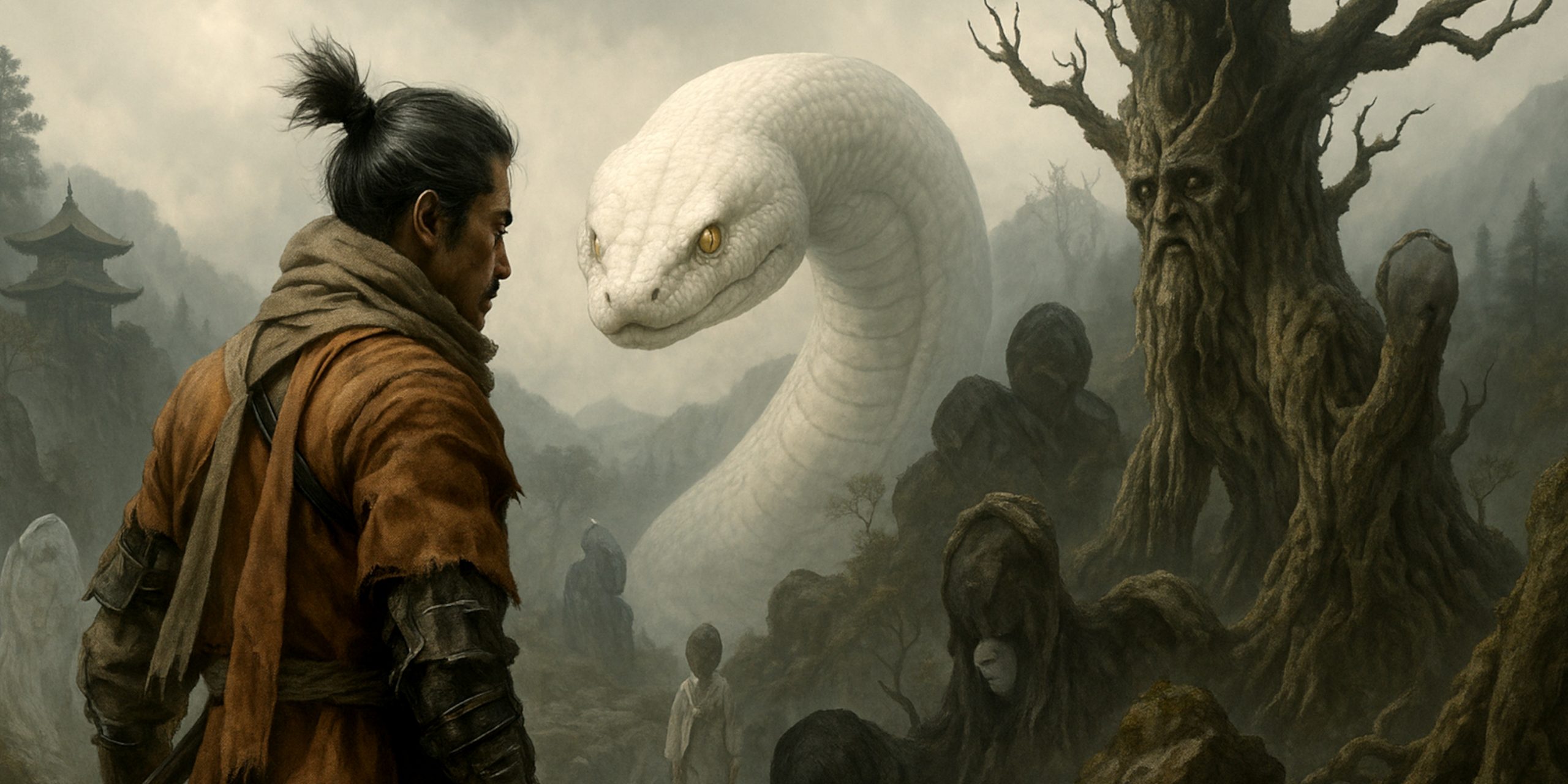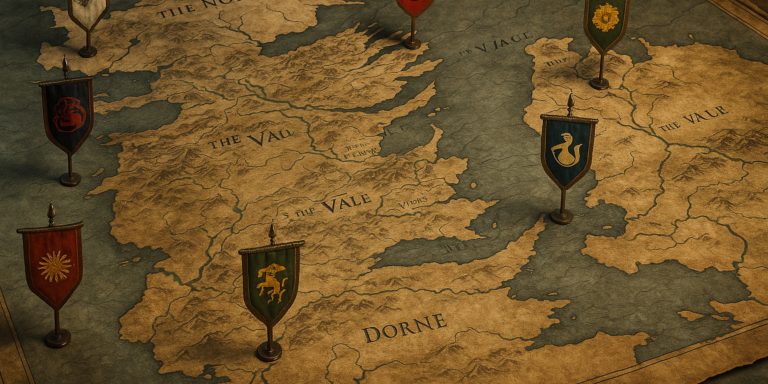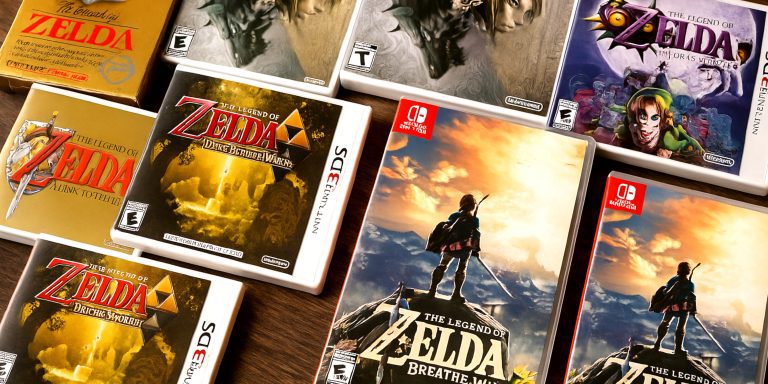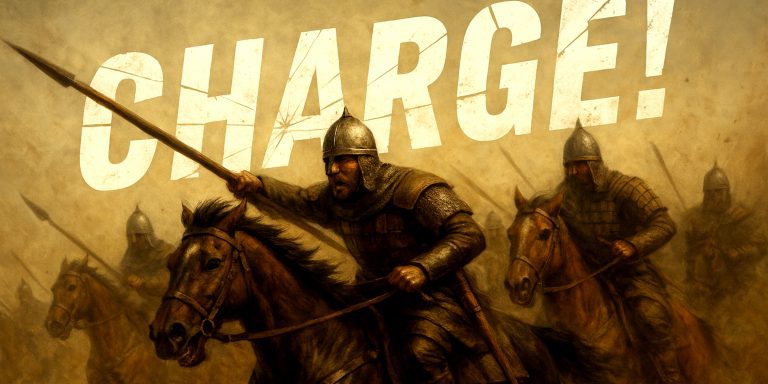
Sekiro and the Influence of Japanese FolkloreHow Myth, Legend, and Yokai Shape the World of Sekiro: Shadows Die Twice
Sekiro: Shadows Die Twice stands apart from other FromSoftware titles not just in combat style or setting, but in how deeply it draws from Japanese folklore. Rather than relying solely on invented fantasy or western myth, it builds a world rooted in centuries-old tales, beliefs, and supernatural fears that once dominated rural Japan. While the story of Sekiro is fictional, much of its tone, creature design, and worldbuilding reflect a cultural foundation older than samurai themselves.
The World Shaped by Folklore
Ashina and its surroundings are not simply backdrops for combat. The decaying temples, mist-covered valleys, and cursed dungeons mirror the kind of haunted landscapes found in Japanese ghost stories, or kaidan. The idea of nature being alive with spirits, curses, and retribution is ever-present, and many locations echo the tension between Buddhist serenity and the violent upheaval of war and ambition.
Senpou Temple, for instance, reflects the dangers of false enlightenment. Its monks, corrupted in their pursuit of immortality, become hollow shadows of themselves. This echoes cautionary tales within Buddhist folklore, where the misuse of spiritual power leads to monstrous consequences.
Yokai, Oni, and Spirit Beasts
Several of Sekiro’s most memorable enemies draw directly from yokai mythology. The Shirafuji Woman, Headless, Shichimen Warrior, and the Great Serpent are not arbitrary designs. They reflect centuries of storytelling around spirits, demons, and cursed entities.
- Headless enemies resemble mujina or noppera-bo, faceless or headless spirits that bring madness and fear.
- The Guardian Ape, whose immortality and grotesque resurrection defy natural order, resembles tales of yamauba magic and cursed beasts from Japanese legend.
- The Great Serpent, meanwhile, plays into the archetype of the Orochi, a mythic multi-headed serpent, but reframed here as a silent, divine force in the landscape, massive, unknowable, and worshipped.
The Divine Dragon boss fight in the Fountainhead Palace draws heavily from Ryujin, the Shinto dragon god of the sea, whose palace beneath the waves was a source of many folktales. The serene, almost dreamlike nature of the fight contrasts with the brutality elsewhere in the game, reinforcing the folkloric theme of otherworldly beauty hiding danger and power.
Undying Warriors and Cursed Lives
The central mechanic of resurrection in Sekiro is itself a thematic mirror of Japanese ghost lore. Rather than a simple gameplay loop, it’s bound to the narrative idea of undeath as a curse. Japanese folktales often depict spirits who cannot pass on due to regret, dishonour, or unnatural deaths. Sekiro himself exists in this limbo, not quite living, not quite dead, echoing stories of onryō, vengeful spirits unable to rest.
The Dragonrot disease is another clear nod to this. It is not just a mechanic to punish repeated failure but also a representation of spiritual corruption, akin to the spreading misfortune in tales of cursed relics or haunted individuals. It makes the unseen costs of supernatural gifts visible and unavoidable.
Cultural Threads in Character and Story Design
Many characters in Sekiro mirror archetypes found in historical and folkloric narratives:
- Lord Kuro, the Divine Heir, recalls the young kami or sacred child figure in many Shinto traditions, granted powers not meant for mortal hands.
- Genichiro Ashina mirrors the tragic war hero, willing to embrace anything, even the unnatural, to protect his land. This recalls the morally grey warriors of Edo-period ballads.
- Lady Butterfly feels lifted from kabuki theatre, a graceful killer whose elegance hides lethal strength, reminiscent of tales of kunoichi and supernatural seductresses.
Even Sekiro himself, the “one-armed wolf,” fits the mould of a ronin or wandering warrior wronged by fate but bound by duty and honour. His path is not about glory but endurance, sacrifice, and spiritual burden, all classic themes in Japanese storytelling.
Seven Swords Takeaway
Sekiro is a game built from Japan, its myths, its fears, its moral codes. From the design of its enemies to its core mechanics and overarching themes, Sekiro is steeped in centuries of cultural storytelling. For players unfamiliar with Japanese folklore, it creates an atmosphere that feels strange yet consistent. For those who recognise its inspirations, it offers a deeper layer of meaning, one where every ghost, beast, and tragic warrior has a mirror in the stories passed down through generations.



